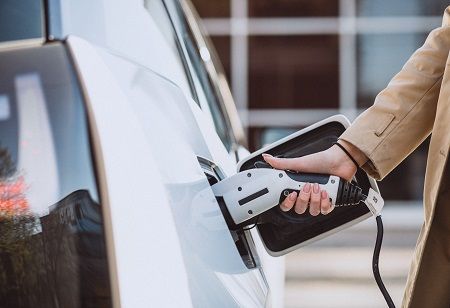
India Can Power All EVs by 2032 Using 3% Green Energy
- Charging all EVs in India by 2032 would need just 3% of the country’s planned solar and wind power capacity.
- Most EVs are charged at night when coal dominates, reducing climate benefits from electrification.
- States are introducing daytime tariffs to encourage solar-hour charging and better use of clean energy.
A recent analysis by Ember, an energy think tank, finds that it will only take 3% of India's targeted solar and wind capacity by 2032 to charge every electric vehicle (EV) in the country.
This means the National Electricity Plan (NEP-14), which sets out a renewable target of 486 GW of solar and wind by 2032, can accommodate the increasing EV fleet without complicating the utilization of the electricity grid.
Furthermore, the report indicates that about 15 GW of renewable capacity would charge up the entire projected EV fleet. But the report also cautions that the climate gains from EVs can be easily diminished by considerations around the timing and style of charging.
"Today, most EV charging happens at homes in the evening and night, when fossil fuels dominate the power mix. Using measures such as Time-of-Day (ToD) tariffs while expanding public charging stations, especially at workplaces and commercial hubs, will enable more daytime charging and greater use of clean energy", said Ruchita Shah, Energy Analyst at Ember.
At the moment, coal is doing the bulk of the electricity generation at night. So while a large percentage of private EV owners charge their vehicles at night, these charging hours have a fuel mix that is still dominated by fossil fuels, thereby detracting from overall carbon reductions.
Also Read: Andhra Pradesh Plans $50B Push in Electronics Manufacturing
In response to this, eight states, including Gujarat, Maharashtra, and Tamil Nadu, have implemented time-of-day (ToD) tariffs that save money on electricity, particularly during sunny hours when solar generation delivers maximum energy at the lowest cost.
The reviewed EV policy and charging patterns across the 10 high-impact states and suggested that public charging locations are deployed at the workplace and commercial points of interest to take advantage of daytime charging aligned with renewable generation.
The report also mentions an open access gap on green tariff delivery. While some commercial users are able to take advantage of renewable pricing availability, residential EV users - who account for the vast majority of EV charging demand - are excluded.
Ruchita Shah added, "States with higher EV adoption can view the EV sector, among others, as a strategic lever to stimulate demand for clean electricity procurement".
Therefore, the report advocates that discoms should provide better data analysis and planning capability such as using real time forecasting capabilities to align EV charging with renewable availability.
Covering transportation emissions with well-planned facilities and service policies, India has an opportunity to utilize the expansion of clean energy to abate a heavy reliance on fossil fuel based transportation.

.jpg)